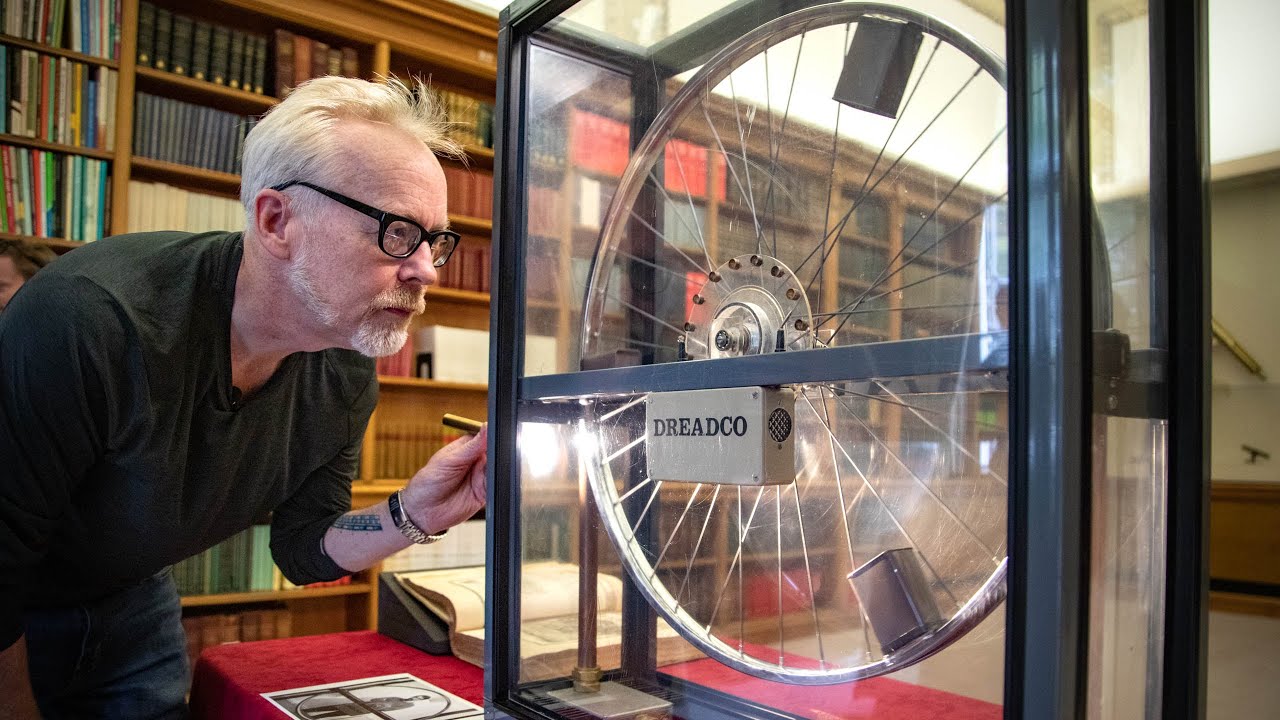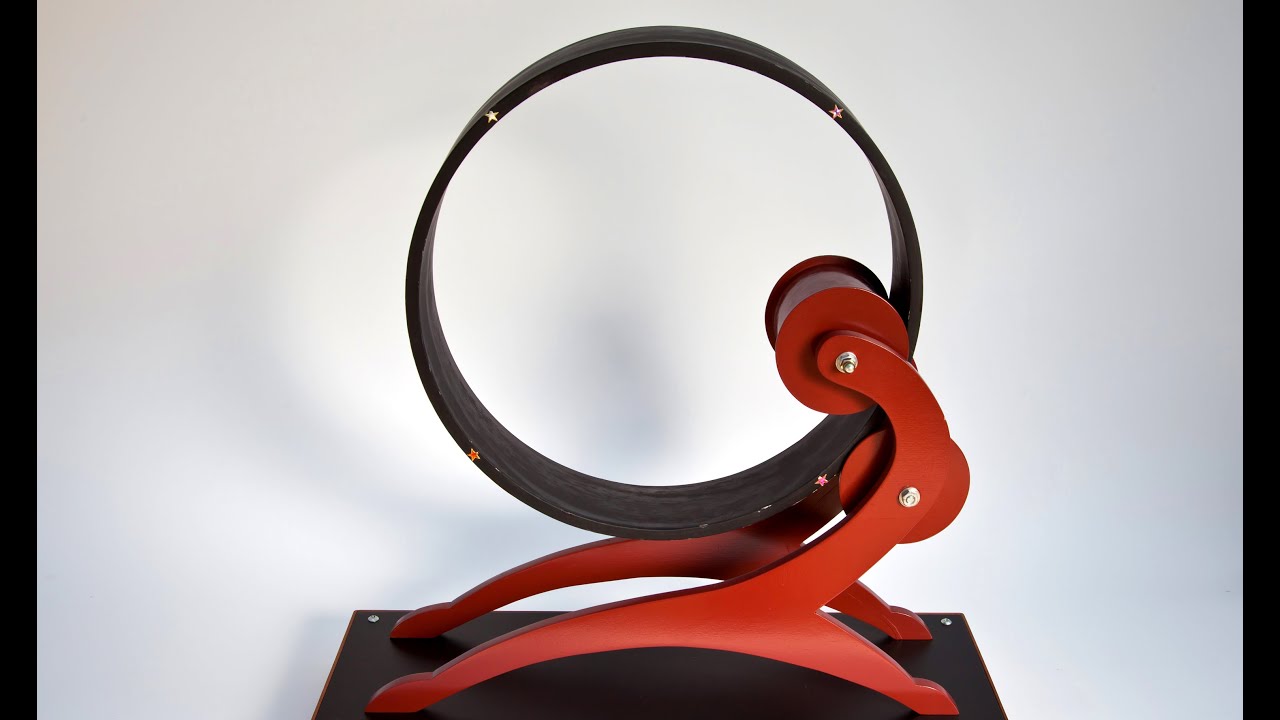In the 1980s, David Jones, who described fanciful inventions in his “Daedalus” column in New Scientist and later Nature, built a series of fake “perpetual motion machines” which he challenged others to figure out what kept them going. (Among the inventions of Daedalus were his prediction of hollow carbon molecules in 1966, long before the discovery of buckminsterfullerene in 1985, 3D printing in 1974, and a space elevator in 1964. The columns are collected in The Inventions of Daedalus and The Further Inventions of Daedalus, both now out of print.)
After David Jones’s death in 2017, a collection of his work was left to Sir Martyn Poliakoff, who donated the “perpetual motion machine” it included to the Royal Society, where it now figures in their collection. Along with the machine was a envelope containing the secret of its operation, which will remain sealed for thirty years.
Many have tried to discern the disguised workings of Daedalus’s perpetual motion machines, but I’ve heard that only one person ever suggested the right answer to its creator. The secret is now kept in an envelope in the archive of the Royal Society, to remain closed for the next 30 years, with the exception of those entrusted with its maintenance – it turns out that the machine may require an occasional nudge to keep it going.
How do you think it works?

